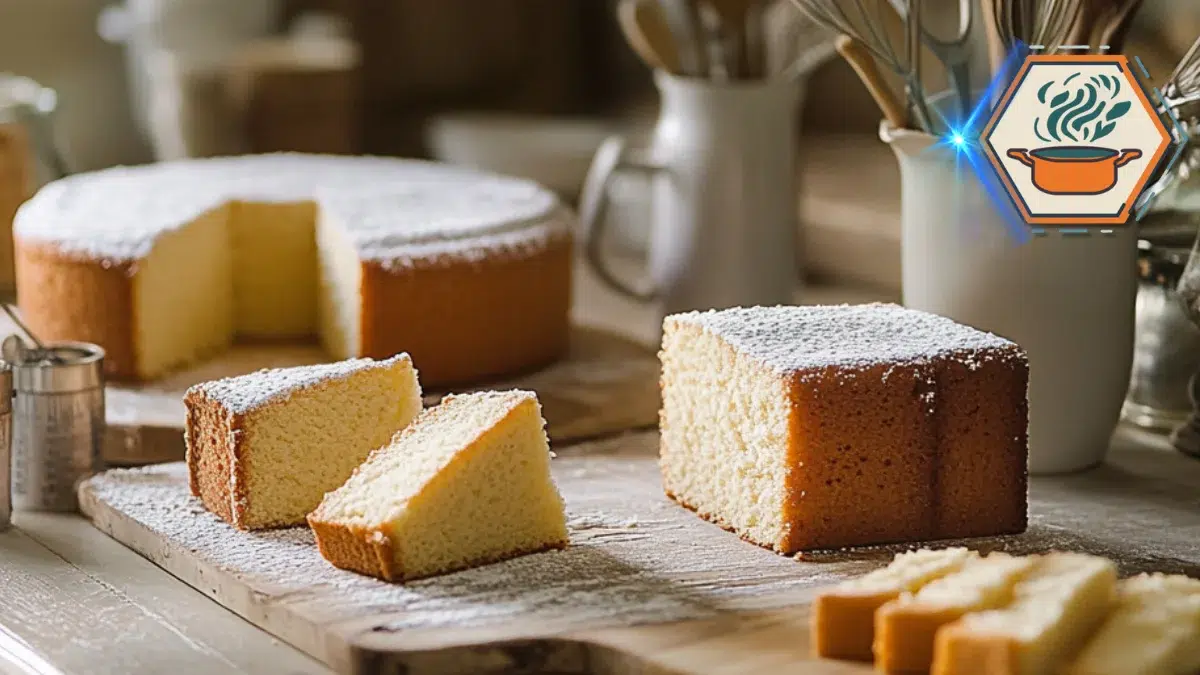Time to read:14 minutes
Table of Contents
Introduction
Difference between Butter Cake and Pound Cake is a common question among bakers and dessert lovers. These two classic cakes, loved for their rich flavors and unique textures, often cause confusion. But what truly sets them apart? In this article, we’ll uncover the key distinctions to help you choose the right cake for any occasion.
What Is a Butter Cake?
A butter cake, known for its light and fluffy texture, is one of the most popular cake varieties in the baking world. The main difference between butter cake and other types of cakes lies in its rich buttery flavor, which is the result of using a generous amount of butter in the recipe. This key ingredient provides a soft, tender crumb that distinguishes butter cake from many other desserts.
The process of making a butter cake often involves the creaming method. This means beating butter and sugar together until light and fluffy. This step helps to trap air, creating a lighter texture.
Butter cakes are versatile and can be used as the base for many desserts, like birthday cakes or layered creations. Popular variations include yellow cake, white cake, and marble cake.
To get more insights into perfect baking techniques, check out our guide on how to make crispy pancakes—it offers great tips on achieving ideal textures.
What Is a Pound Cake?
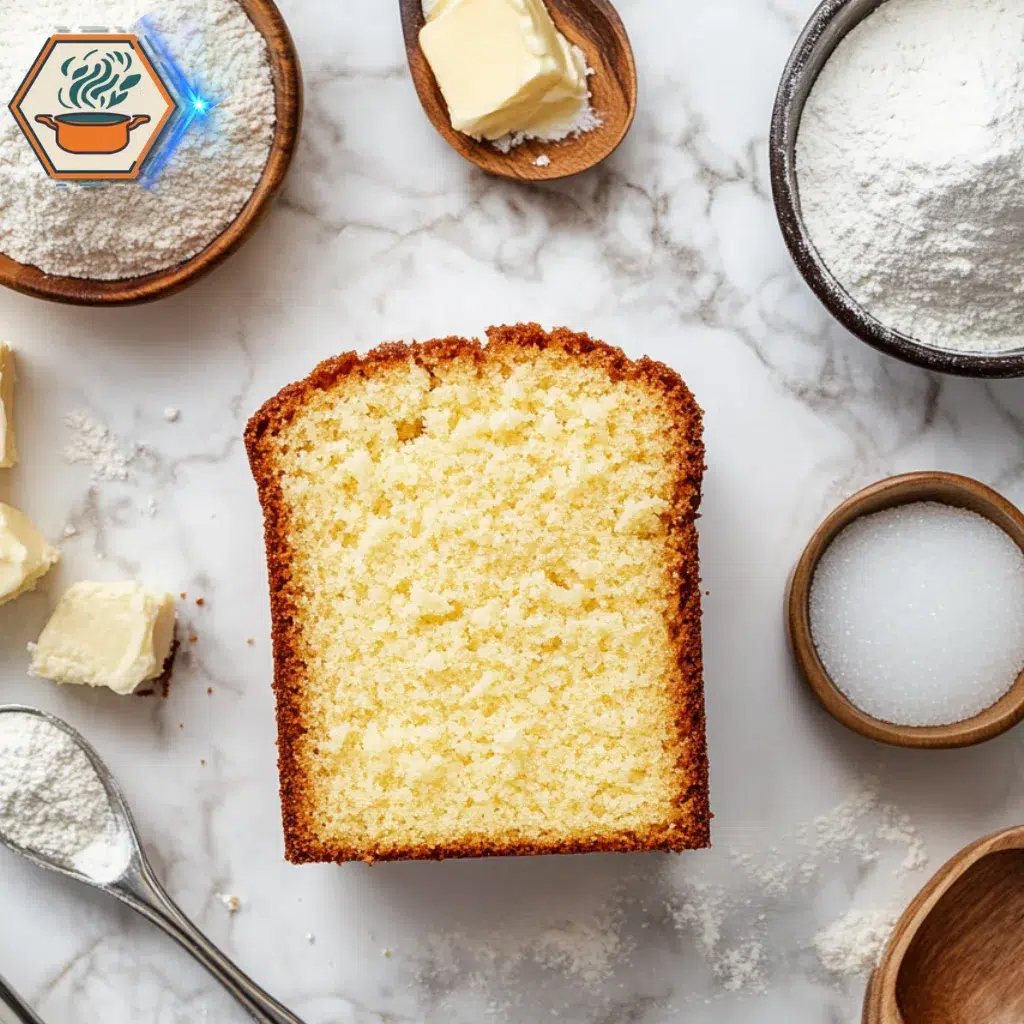
Pound cake, unlike butter cake, is known for its dense, firm texture. The key difference between butter cake and pound cake is in their ratios and leavening techniques. While butter cakes use a creaming method that incorporates air, pound cakes are made with equal parts of butter, sugar, eggs, and flour, which gives them their rich, hearty consistency without the need for leavening agents.
Pound cakes are often baked in loaf pans or Bundt pans, giving them a distinct shape. Their texture is firm, making them ideal for slicing and pairing with toppings like whipped cream, fruits, or chocolate sauce.
Modern recipes sometimes adjust the traditional ingredients to make the cake lighter or add flavors like vanilla, lemon, or almond. Despite these tweaks, pound cakes maintain their signature dense and buttery texture.
For a deep dive into the history of pound cakes, the Wikipedia page on pound cake offers an excellent overview.
Why Understanding Their Differences Matters in Baking and Beyond
Knowing the difference between butter cake and pound cake is essential for bakers. Each cake serves a different purpose, whether you’re hosting a party, preparing a tea-time snack, or creating a show-stopping dessert.
- Butter cakes are light and moist, perfect for layers and frosting.
- Pound cakes are dense and firm, making them ideal for slicing or serving with toppings.
Choosing the right cake can elevate your baking. For example, if you’re making a layer cake, a butter cake’s lighter texture works better. On the other hand, if you need a sturdy cake for decoration or toppings, a pound cake is the way to go.
Additionally, understanding these cakes’ characteristics can help you troubleshoot common baking issues. For instance:
- Why does my butter cake sometimes feel dry?
- Why does my pound cake crack on top?
We’ll answer these questions in detail in the FAQ section later.
For now, bookmark our article on how to keep madeleines moist, as the tips are useful for many cake recipes.
The Basics: Ingredients and Preparation
Butter cakes and pound cakes share a rich heritage in the baking world. Both are beloved for their buttery flavor and moist texture, yet their preparation techniques and ingredient choices set them apart. Understanding these nuances is key to mastering either recipe.
Key Ingredients in Butter Cake
Butter and Sugar: The Foundation of Texture
Butter cakes owe their softness to the perfect creaming of butter and sugar. This step introduces air into the batter, leading to a light and fluffy cake. Butter not only adds flavor but also creates a tender crumb when properly incorporated.
Sugar, on the other hand, adds sweetness and plays a crucial role in structure. It binds with water, ensuring the cake remains moist. For best results:
- Use unsalted butter at room temperature for easier creaming.
- Opt for fine granulated sugar for a smoother batter.
For more tips on achieving the right consistency, refer to Master Caramelizing Sugar.
Flour and Leavening Agents: Variations to Note
Flour selection is essential in determining the final texture. All-purpose flour is common for its versatility, while cake flour, with its lower protein content, results in a softer texture.
Leavening agents like baking powder and baking soda are typically added to ensure a good rise. Their combination with the air introduced during creaming ensures a light and airy cake.
Key Ingredients in Pound Cake
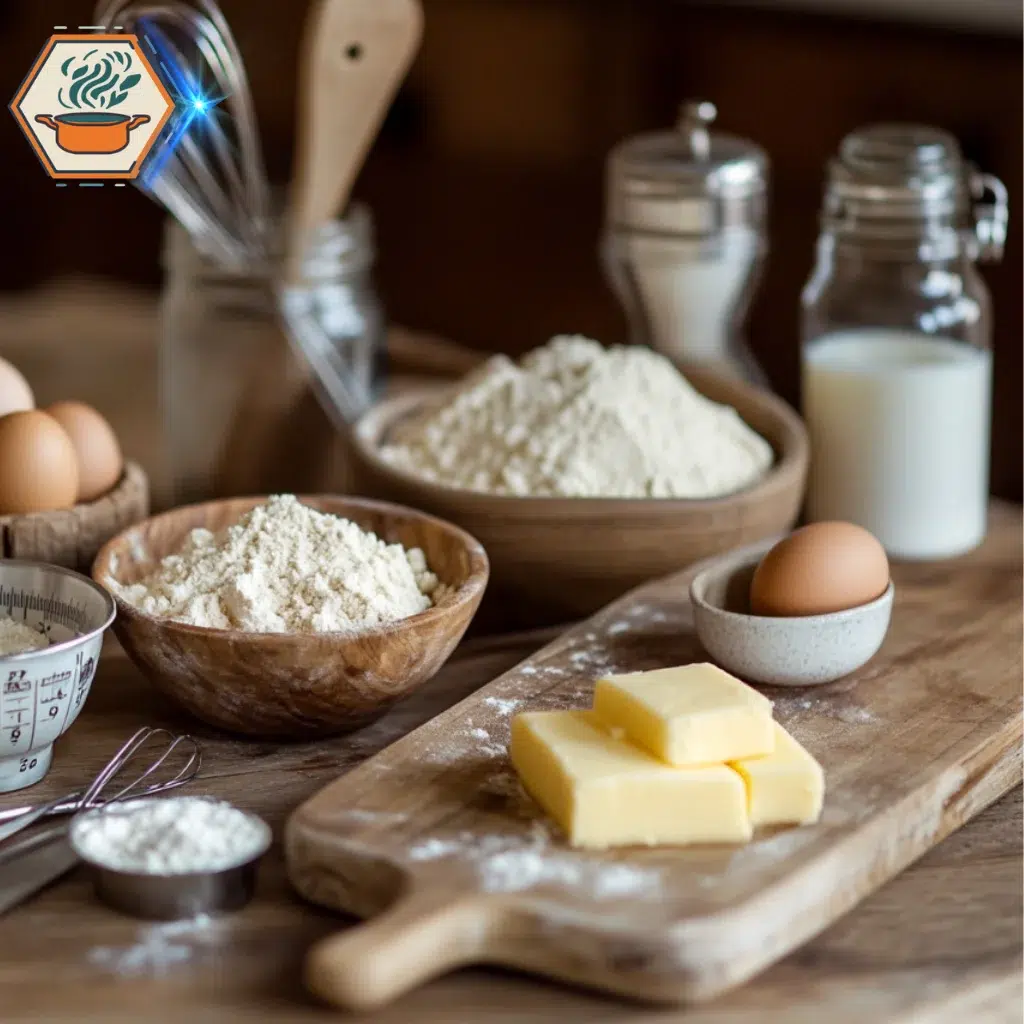
The Traditional “1:1:1:1” Ratio
The pound cake gets its name from its original recipe: one pound each of butter, sugar, eggs, and flour. This ratio creates a dense and rich cake. While modern recipes often adjust these proportions, the spirit of simplicity remains.
Eggs are pivotal in pound cakes. They provide structure and moisture, binding the ingredients together. The yolks add richness, while the whites contribute to firmness. Achieving the right balance is key.
Modern Twists on a Classic Recipe
Contemporary recipes sometimes include ingredients like sour cream or buttermilk to enhance moisture and add a slight tangy flavor. Vanilla extract and citrus zest are popular flavor enhancers, adding depth without overwhelming the classic taste.
Comparing Baking Techniques
The Creaming Method: Essential for Butter Cakes
The creaming method is a cornerstone technique for butter cakes. This process involves beating the butter and sugar together until they’re light and fluffy. Tips for mastering this step:
- Use a stand or hand mixer on medium speed for consistent results.
- Stop and scrape down the bowl frequently to ensure even mixing.
- Beat until the mixture turns pale and doubles in volume.
Simple Mixing: The Pound Cake Approach
Pound cakes rely on a simpler mixing method. The ingredients are combined without whipping air into the batter, resulting in a dense and tender crumb. This method minimizes over-mixing, which could lead to a tough cake. Best practices include:
- Mixing the dry and wet ingredients separately before combining.
- Gently folding the batter to avoid deflating it.
For those interested in experimenting with caramelized elements in desserts, read our guide on Master Caramelizing Sugar.
Texture, Taste, and Uses
When choosing between butter cake and pound cake, it’s essential to consider the distinct textures and tastes. The difference between butter cake and pound cake lies not only in their flavor but also in their density and versatility, making each suitable for various occasions.
Butter Cake: Lightness and Versatility
Butter cake is celebrated for its soft, airy texture and slightly sweet taste. Thanks to the balance of ingredients like butter, sugar, eggs, and milk, it achieves a lightness that makes it adaptable to many flavors and fillings. Its versatility means it works well as a base for creative recipes or as a standalone treat.
- Perfect Occasions: Butter cakes shine at birthdays, anniversaries, and as layer cakes for elegant celebrations. Their ability to hold frosting and fillings makes them ideal for customizing designs and flavors.
- Creative Twist: Ever thought of pairing a butter cake with a crispy pancake-inspired topping for breakfast-themed celebrations? Find the perfect method for this in our guide on How to Make Crispy Pancakes.
Butter cakes also serve as a delightful canvas for intricate designs, making them popular in the baking world.
Pound Cake: Dense and Rich Flavors
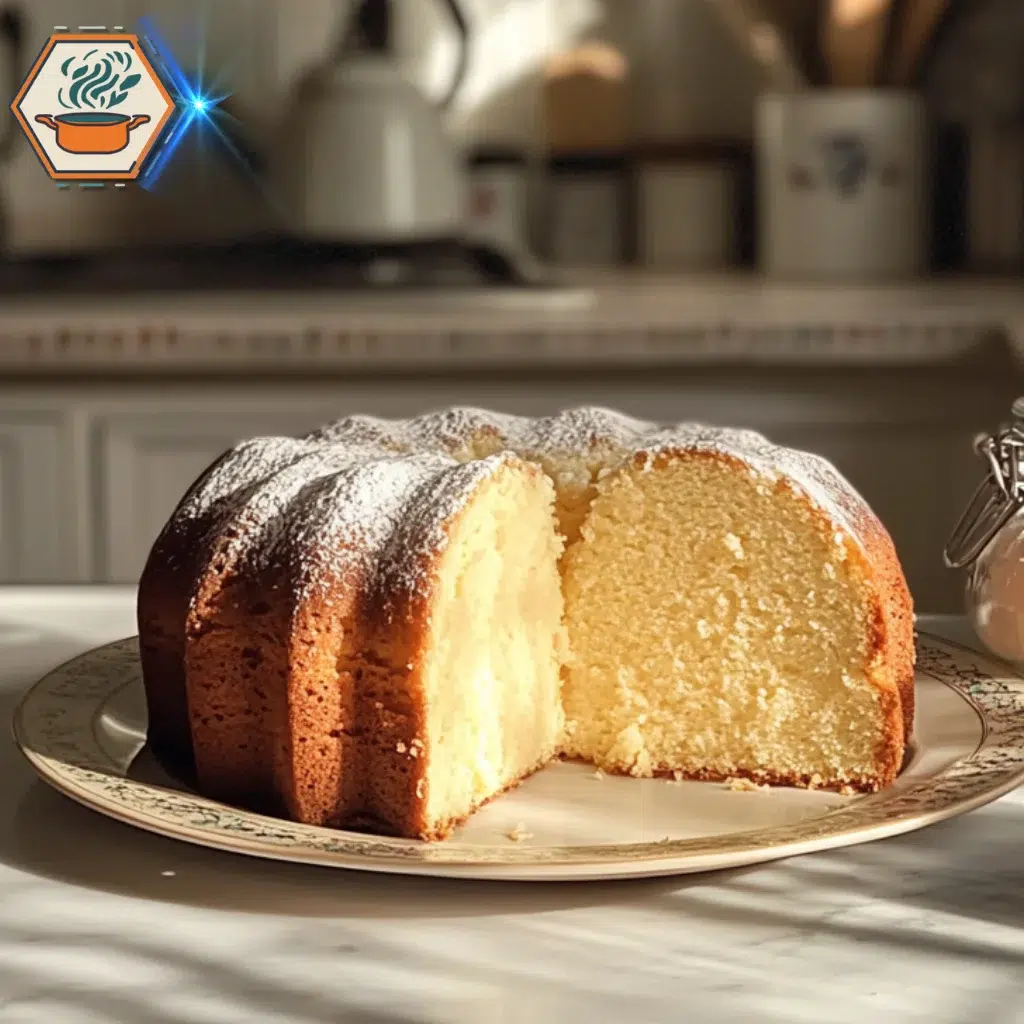
In contrast, pound cake boasts a dense texture and buttery richness. Traditionally made with equal parts butter, sugar, eggs, and flour, it offers a melt-in-your-mouth experience with a more robust flavor.
- Perfect Occasions: Pound cakes are ideal for tea-time gatherings, as dessert with fresh fruits, or simply enjoyed with coffee. Their stability allows for slices to hold their form, making them excellent for topping with spreads or fruit compotes.
- Rich Additions: Pound cakes complement rich flavors like chocolate or caramel drizzle, adding a layer of indulgence to every bite.
Visual and Tactile Differences Between Butter Cake and Pound Cake
The contrast in appearance and feel between these cakes is easy to notice. Butter cakes are lighter in color and have a fluffier texture. They tend to spring back when touched gently. On the other hand, pound cakes are denser, with a golden crust and a crumbly, yet moist interior.
These visual cues make it simple to distinguish between the two, even before tasting. Butter cakes also have a smoother crumb, while pound cakes deliver a heavier bite.
Which Cake to Choose?
Selecting between butter cake and pound cake often comes down to personal preference. Here’s a quick comparison:
- For Lighter Tastes: Butter cake is the winner for those who prefer soft, airy textures with a sweeter, less overwhelming flavor.
- For Richer Flavors: Pound cake satisfies cravings for dense, buttery bites with a touch of indulgence.
When Moistness Matters
Moistness is a key factor in both cakes, as it ensures a satisfying eating experience. Butter cakes maintain their light texture by incorporating milk, while pound cakes use higher butter content to lock in moisture. For those who prioritize a cake’s softness, a butter cake might feel more satisfying. Alternatively, pound cakes provide a moist, rich taste that pairs beautifully with tea or coffee.
- External Reference: Learn more about how butter enhances cake textures in this guide on butter’s role in baking.
By understanding these differences, you can choose the perfect cake for any event or mood. Each has its own strengths and applications, allowing you to explore baking options with confidence.
Advanced Insights and FAQs
When it comes to achieving baking perfection, understanding the nuances of recipes and common issues is key. Below, we dive into advanced tips, substitutions, and solutions for some of the most frequently asked questions about butter cakes and pound cakes.
Common Substitutions in Recipes
Substitutions can be a lifesaver when you’re missing an ingredient or need a healthier option. Here are some practical swaps:
- Butter: Use an equal amount of coconut oil for a dairy-free option, or substitute half the butter with unsweetened applesauce for lower fat content.
- Sugar: Replace regular sugar with honey or maple syrup, adjusting liquid ingredients accordingly.
- Milk: Try almond milk or oat milk as substitutes. For richer results, buttermilk can enhance texture and flavor.
Can You Adapt Recipes to Highlight the Difference Between Butter Cake and Pound Cake?
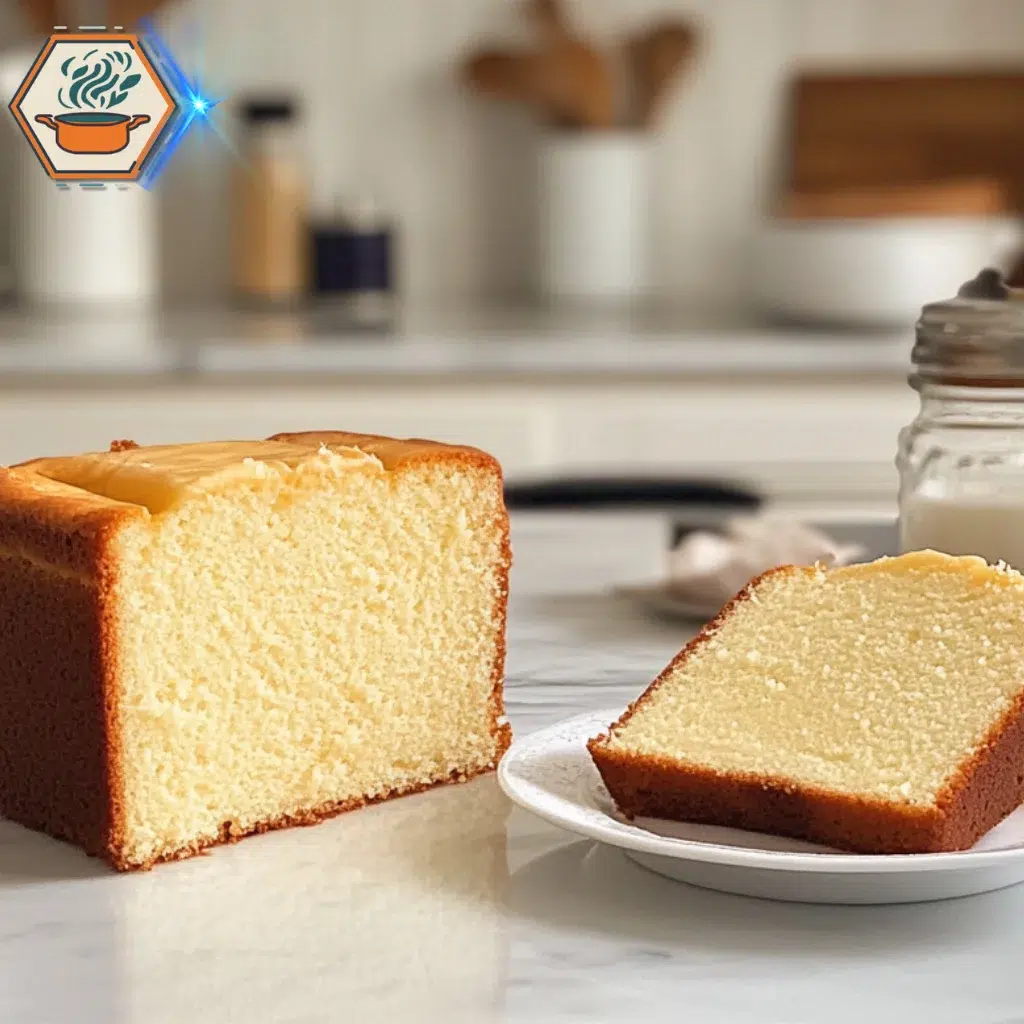
Yes, with a few adjustments! Butter cakes are typically lighter than pound cakes. Here’s how to adapt your recipe:
- Reduce the flour: Use slightly less flour to make the cake less dense.
- Increase the liquid: Add an extra tablespoon or two of milk to create a softer batter.
- Incorporate leavening agents: Adding baking powder or baking soda can help the cake rise more, creating a fluffier texture.
Adjustments for Healthier Baking
If you’re looking to make your cakes healthier, here are some simple adjustments:
- Lower sugar content: Reduce sugar by up to 25% without significantly altering the taste. Add a pinch of cinnamon or vanilla to compensate for sweetness.
- Use whole-grain flour: Replace half of the all-purpose flour with whole wheat flour for added fiber.
- Cut back on fats: Substitute part of the butter with Greek yogurt or mashed bananas for a moist, healthier cake.
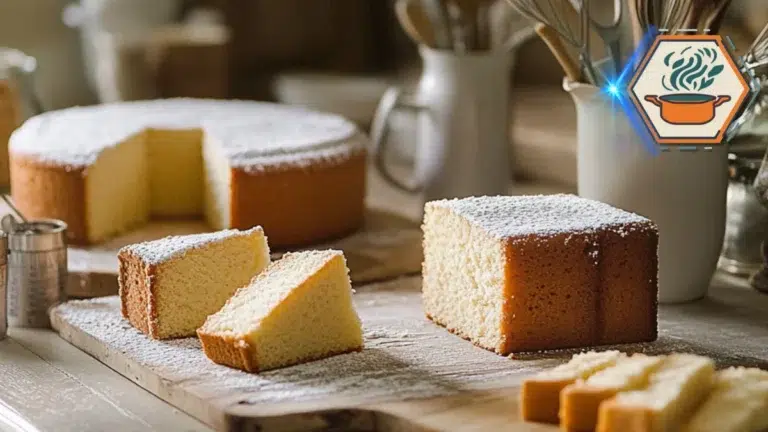
Classic Butter Cake Recipe
Discover how to bake the perfect butter cake with this easy-to-follow recipe. Light, fluffy, and rich in buttery flavor, it’s ideal for any occasion.
- Total Time: 50 minutes
- Yield: 12 servings
Ingredients
Dry Ingredients:
- 2 1/2 cups all-purpose flour (or cake flour for a lighter texture)
- 2 1/2 teaspoons baking powder
- 1/2 teaspoon salt
Wet Ingredients:
- 1 cup unsalted butter, at room temperature
- 2 cups granulated sugar
- 4 large eggs, at room temperature
- 1 teaspoon pure vanilla extract
- 1 cup whole milk
Instructions
Prep the Oven and Pan:
Preheat your oven to 350°F (175°C). Grease and line two 9-inch round cake pans with parchment paper.Mix Dry Ingredients:
In a medium bowl, sift together the flour, baking powder, and salt. Set aside.Cream Butter and Sugar:
Using a stand mixer or hand mixer, beat the butter and sugar on medium speed until light and fluffy (about 3–5 minutes). Scrape down the sides of the bowl as needed.Add Eggs and Vanilla:
Add the eggs, one at a time, beating well after each addition. Mix in the vanilla extract.Alternate Adding Dry Ingredients and Milk:
Reduce the mixer speed to low. Add the dry ingredients in three batches, alternating with the milk, starting and ending with the dry ingredients. Mix until just combined; do not overmix.Pour and Bake:
Divide the batter evenly between the prepared pans. Smooth the tops with a spatula. Bake for 25–30 minutes or until a toothpick inserted into the center comes out clean.Cool the Cake:
Allow the cakes to cool in the pans for 10 minutes, then transfer them to a wire rack to cool completely before frosting or serving.
Notes
- For extra flavor, substitute half of the vanilla extract with almond or lemon extract.
- Use cake flour for a softer crumb.
- This butter cake serves as an excellent base for layered cakes or cupcakes.
- Prep Time: 20 minutes
- Cook Time: 30 minutes
- Category: Dessert
- Method: Baking
- Cuisine: American
- Diet: Vegetarian
FAQs: Addressing People’s Top Questions
Here are detailed answers to common questions bakers often ask:
How Do I Avoid a Dense Butter Cake?
Dense cakes can be caused by overmixing or using the wrong ratios of ingredients. Follow these tips:
Sift your dry ingredients: This aerates the flour and helps create a lighter texture.
Don’t overmix: Mix until just combined to avoid over-developing the gluten.
Measure accurately: Use a kitchen scale for precise measurements.
Why Did My Pound Cake Crack on Top?
A cracked top is often due to the baking temperature. Here’s how to prevent it:
Lower the temperature: Bake at 325°F instead of 350°F to allow for even rising.
Check your oven: Ensure the temperature is consistent with an oven thermometer.
Can I Use Water Instead of Milk in Pound Cake?
Water can be used in place of milk, but it may affect the flavor and texture. For better results, try a non-dairy milk like almond milk. For more on substitutions, see our guide to using milk in meatloaf.
What’s the Secret to Moist Cakes?
Achieving a moist cake is all about balance:
Add sour cream or yogurt: These ingredients retain moisture without making the cake heavy.
Don’t overbake: Use a toothpick to check for doneness; it should come out with a few crumbs, not completely clean.
Use the right pan: Non-stick pans can reduce moisture loss during baking.
Expert Tips for Perfect Results Every Time
- Room temperature ingredients: Always use room temperature butter and eggs for smoother mixing and better texture.
- Preheat your oven: Make sure the oven reaches the desired temperature before baking.
- Grease and line your pans: This ensures easy removal and prevents sticking.
How to Store and Serve Cakes for Maximum Freshness
Proper storage can extend the life of your cakes and maintain their quality:
- Wrap tightly: Use plastic wrap or an airtight container to prevent drying.
- Refrigerate for longer storage: Butter cakes can last up to a week in the fridge.
- Serve at room temperature: Allow refrigerated cakes to come to room temperature before serving for the best flavor and texture.
Decorating Ideas for Butter Cake vs. Pound Cake
- Butter Cake: Use whipped cream and fresh berries for a light and elegant topping.
- Pound Cake: Add a drizzle of lemon glaze or a dusting of powdered sugar for a classic look.
For more creative dessert ideas, explore our guide to caramelizing crème brûlée without a blowtorch.
Butter Cake vs. Pound Cake: Choosing the Right Dessert for Any Occasion
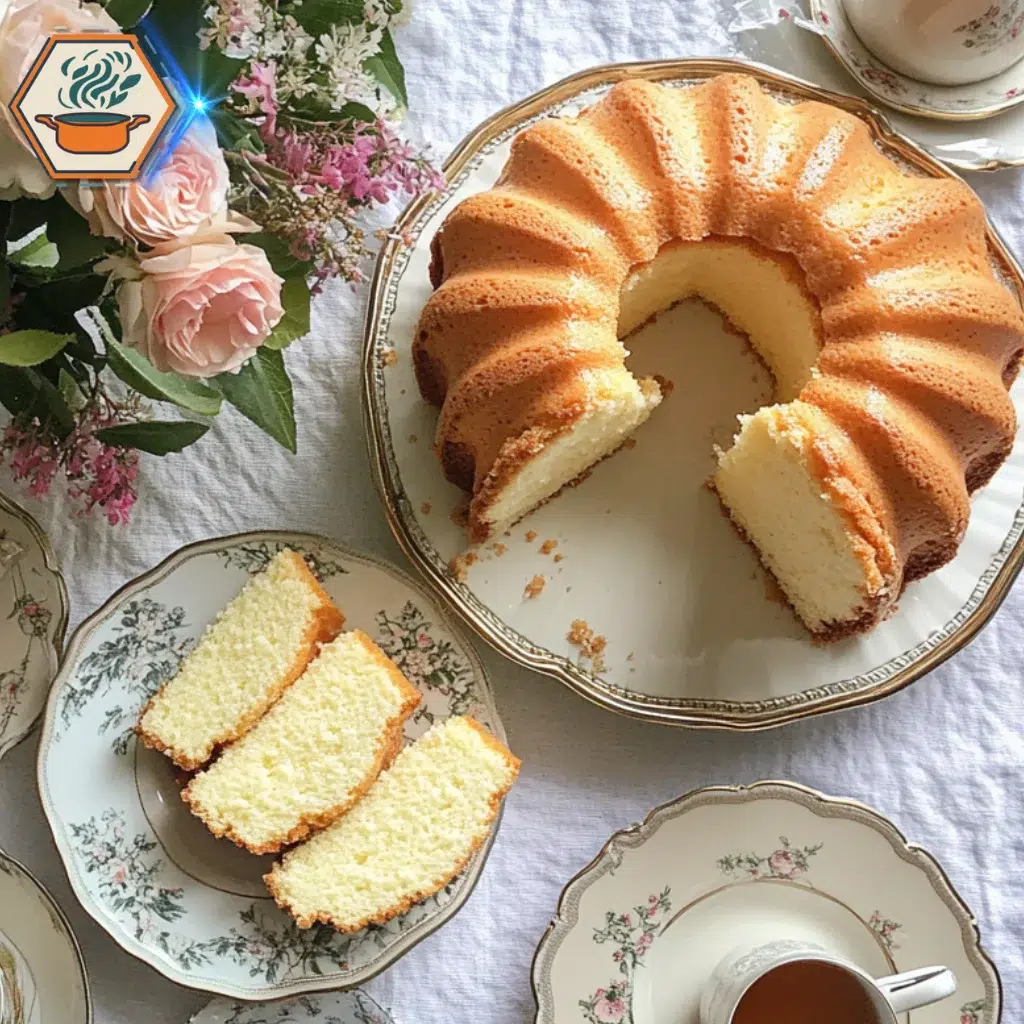
When it comes to classic cakes, few are as beloved as the butter cake and the pound cake. These two iconic desserts have graced tables for generations, but their differences often leave home bakers scratching their heads. Are they interchangeable? What sets them apart? In this article, we’ll explore the nuances between butter cake and pound cake, helping you decide which one to bake for your next celebration or cozy evening at home.
Summarizing Key Differences Between Butter Cake and Pound Cake
To recap, both butter cakes and pound cakes offer unique characteristics that make them special. Here’s a quick summary of their differences:
- Butter Cake: This cake is light, fluffy, and uses a leavening agent like baking powder or baking soda. It’s versatile and often used as a base for layered cakes or cupcakes.
- Pound Cake: Known for its dense texture and rich flavor, this cake typically relies on equal parts of butter, sugar, eggs, and flour. It’s perfect as a standalone dessert.
Butter cakes are ideal when you need a cake that’s soft and pairs well with frosting or toppings. On the other hand, pound cakes are best for occasions where simplicity and richness take center stage. Both cakes have their merits, and the choice largely depends on the texture and flavor profile you’re looking for.
Choosing the Right Cake for Every Occasion
Selecting between a butter cake and a pound cake depends on the event and your preferences. Consider these tips:
- For Birthdays and Celebrations: Go with butter cake. Its airy texture makes it perfect for stacking layers with frosting or fruit.
- For Afternoon Tea or Picnics: Choose pound cake. Its dense nature means it travels well and doesn’t require extra toppings to shine.
- For Experimenting with Flavors: Butter cake is a great canvas for creativity, allowing you to incorporate ingredients like cocoa, citrus zest, or spices.
- For Simple, No-Fuss Baking: Pound cake requires fewer ingredients and less precision in mixing, making it an excellent choice for beginner bakers.
When in doubt, consider the occasion, the preferences of those you’re serving, and the time you have to bake. There’s no wrong choice; both cakes are delightful in their own right.
Encouragement for Readers to Experiment
The charm of baking lies in its versatility and the opportunity for creativity. Don’t hesitate to try both butter cake and pound cake recipes to see which you enjoy most. Add personal touches by experimenting with flavors, such as almond extract, fresh berries, or even a swirl of caramel. Baking should be a fun and rewarding experience.
Remember, whether you choose butter cake or pound cake, the goal is to enjoy the process and share your creations with loved ones. Happy baking!

